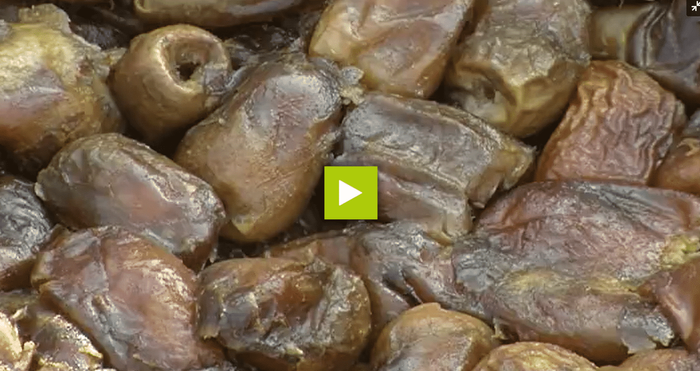Fresh dates fetch a lower price at the market and must be consumed shortly after harvest or they will go bad. Pressing them increases their market value and enables dates to be stored for long.
Dates ripen at different times hence during harvesting, shake the branches gently to harvest the ripe dates and at the end of the season, chop off the fully ripen bunches and remove the dates manually.To make pressed dates, the dates should have same ripeness. Drying the dates under the sun enables them to attain the right ripeness for pressing and also helps to reduce on the moisture content of the dates. When drying the dates, dry each new harvest separately.
Hygiene at pressing
Choose a hot day to press the dates and begin at midday after the dates have received the morning sun. Lay the packing containers in a clean enclosure inside the drying area. The packaging container should have a large enough opening to ease pressing of the dates, and should be easy to carry once its filled.
Place an airtight plastic bag in a crate made from palm leaves, line it with paper and extend it with a removable frame. The paper prevents damaging of the plastic bag and the frame provides support when pressing the dates.
Rinse the dates in a basket with clean water and pick out any bad ones, branches or stones. Shake to drain any excess water and pour the dates into the plastic bag in small batches as you press. Add another layer when the previous is compact and levelled and when full, seal the plastic bag by tying a double knot.
Remove the wooden frame and add a final layer of paper and tightly tie a lid to the op using a wire, then store in a room off the ground. Stack the dates up to 3 layers but if storage exceeds 2 months, swap the bottom crate with the one on top.



















